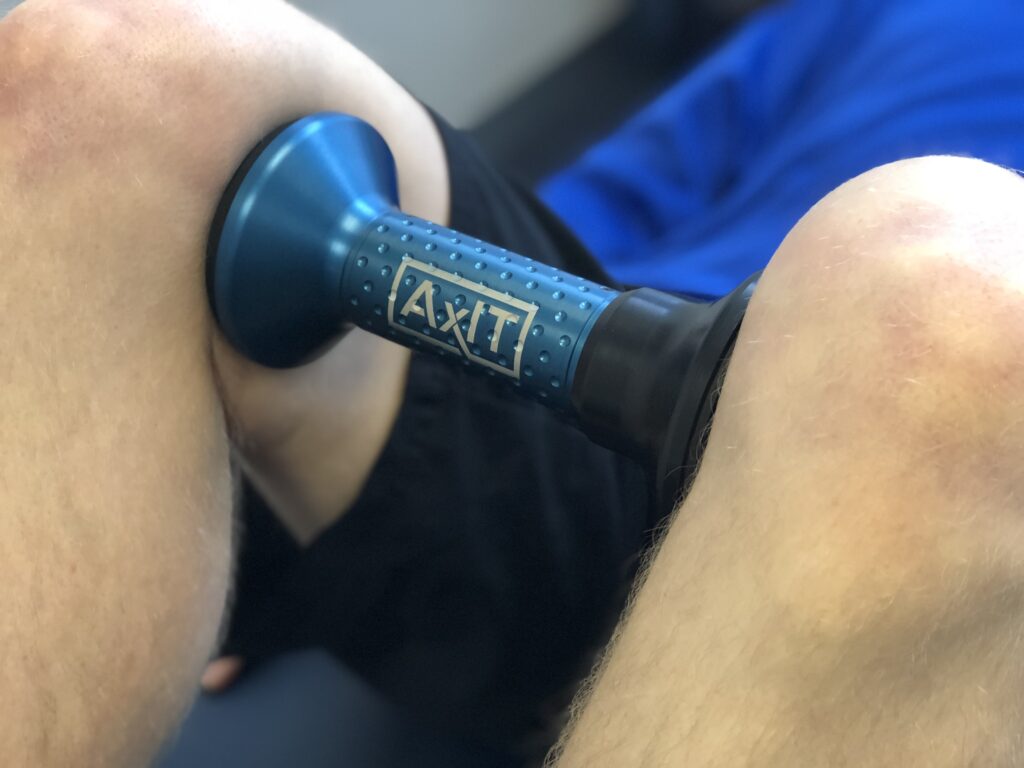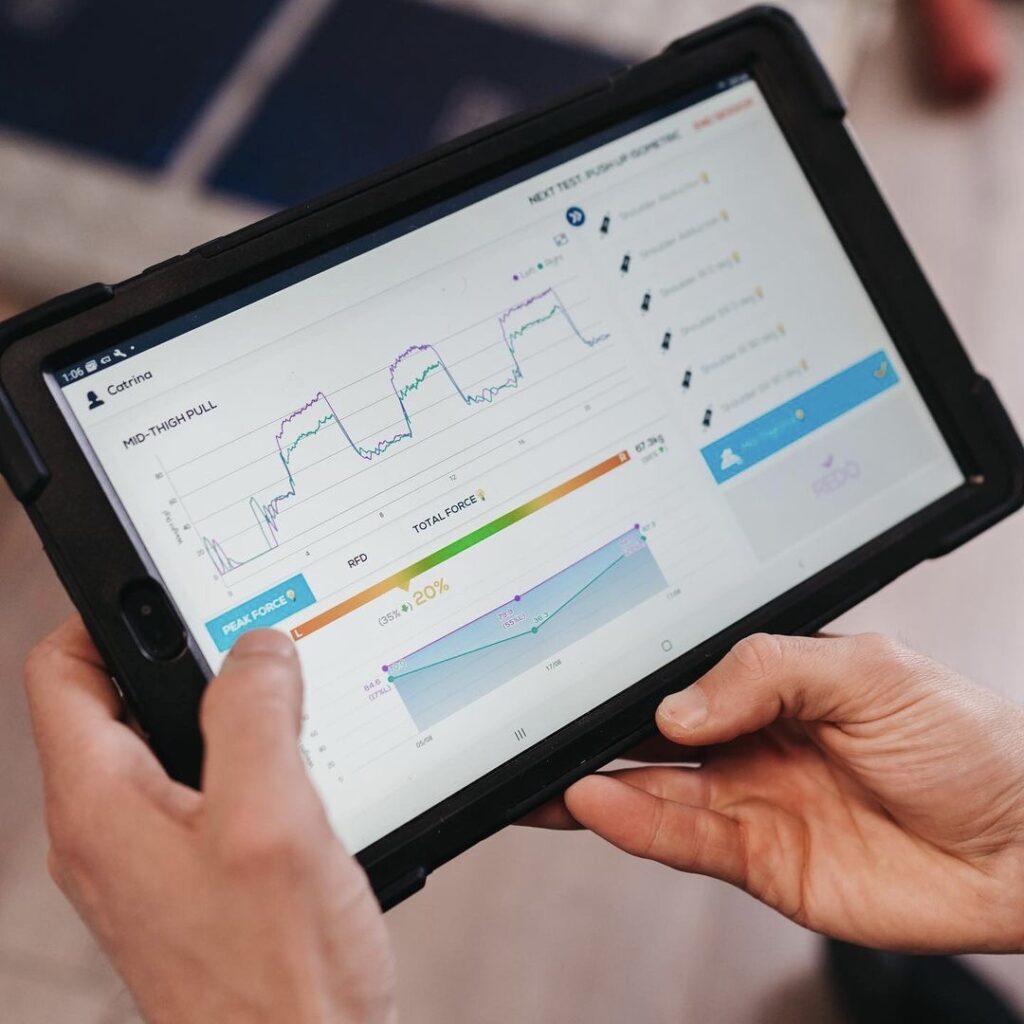Returning players to peak performance as quickly—but more importantly, as safely—as possible is often one of the primary goals for health and fitness professionals when managing return to sports cases.
While healing time has traditionally been the main indicator of readiness to return to play, it often fails to capture the complexities of true recovery. Questions such as “is this athlete at the same level of performance as before they were injured?” “was that level good enough in the first place?” “are there any other underlying areas of deficiency or imbalance that could predispose to this happening again?” often remain unanswered.
In light of this, adopting a criteria-based assessment framework, as outlined in the recent 2024 research paper “A Return-to-Performance Pathway for Professional Soccer: A Criteria-Based Approach to Return Injured Professional Players Back to Performance” by Andrew Mitchell, MSc, MSc, BSc (Hons), and Mo Gimpel, BSc (Hons) .can be a way to simplify the needs for any client, not just athletes as they progress to higher levels of function and performance.
In this article, we explore how a criteria-based approach, integrated with tools like AxIT Force Plates and AxIT Dynamometers, can revolutionize rehabilitation. We will also discuss how AxIT’s normative data helps therapists make informed decisions and provide examples of tests and exercises that target specific performance deficits or imbalances.
The Problem with Relying Solely on Healing Time
One of the most significant insights from the Return-to-Performance Pathway is the idea that healing time does not always align with functional readiness. The paper highlights that a player may have “healed” structurally but still lack the strength, balance, or neuromuscular coordination needed to safely return to training or competition. This disconnect between healing and readiness increases the risk of reinjury when decisions are based solely on time.
The criteria-based framework avoids this pitfall by setting clear exit criteria at each stage of rehabilitation. These criteria are not tied to the number of days or weeks post-injury, but to functional capabilities, such as strength levels, balance, movement quality, and sports-specific skills. This ensures that players only progress when they are physically prepared to handle the demands of the next phase.
Key Phases in the Return-to-Performance Pathway
The Return-to-Performance Pathway consists of a series of phases, each with its own objective criteria that must be met before moving forward. These phases guide the player from early rehabilitation through to the return to competitive play.

- Acute Phase – Focuses on pain management, reducing swelling, and protecting the injury site.
- Gym Phases – Gradually restore movement patterns, strength, and capacity through exercises that build up to sports-specific activities.
- Grass Phases – Introduce running, agility drills, and positional training with an emphasis on building reactive strength, speed, and sports-specific performance.
Throughout these phases, objective testing is critical. For example, Gym Phase 3 focuses on profiling athletes’ readiness to return to running (RTRunning) through specific strength and balance tests. Here, using tools like AxIT Force Plates and AxIT Dynamometers is key to accurately assessing whether the athlete has regained sufficient strength and force production to handle more dynamic activities like running and jumping.
How AxIT Force Plates And Dynamometers Fit Into Each Phase

Incorporating AxIT technology into the Return-to-Performance Pathway provides therapists with the tools they need to quantify progress at each stage. These tools allow for precise measurement of key performance variables, offering data that supports objective decision-making.
- Acute Phase:
- AxIT Dynamometers can be used early on to test isometric strength and ensure that basic muscle function is returning whilst also giving a physical measure to the clients pain and sensitivity as measured by force tolerance of the area. Testing key muscle groups, such as the quadriceps and hamstrings, provides an early indicator of recovery.
- Gym Phases:
- AxIT Force Plates play a vital role during Gym Phase 1, where balance, and loading are restored. Measuring ground reaction forces during exercises such as squats or lunges helps assess load symmetry and ensures that athletes are regaining bilateral strength before progressing to more challenging tasks.
- AxIT Dynamometers are once again used in Gym Phase 2 to track strength capacity of key isolated muscle groups to reduce deficiencies or muscle imbalances.
- In Gym Phase 3, AxIT Force Plates and AxIT Dynamometers are essential for profiling readiness to return to running. Force plates can measure rate of force development during jumps, while dynamometers can test muscle strength to confirm that the injured limb has returned to pre-injury strength levels or meets normative standards.
- Grass Phases:
- Once on the field, AxIT Force Plates can continue to monitor explosive power and landing mechanics during drills. Exercises like Counter Movement Jumps or 10/5 repeat hops are tested for symmetry and force production, ensuring athletes can safely handle high-impact, high-speed actions.
- AxIT Dynamometers can also be used to track progress in terms of rate of force development (RFD) endurance and fatigue, which are crucial as players increase their training loads in Grass Phase 2 and beyond.

What Data Should You Compare To?
- Aim to restore preinjury, preseason, or ideally, previous metrics from longitudinal limb monitoring.
- In the absence of these data, aim to recover normative data from a comparative cohort.
- In the absence of these data, a limb symmetry index may be used, but with caution due to deconditioning of the contralateral limb or positive adaptation of the contralateral limb during the rehabilitation process.
- In all cases, an individualized and contextual interpretation of the metrics must be considered from a clinical and performance perspective.
Conclusion
The Return-to-Performance Pathway offers a robust, criteria-driven framework for safely returning injured athletes to competition. By focusing on objective milestones rather than time, therapists can ensure athletes progress based on readiness, not arbitrary timelines. Tools like AxIT Force Plates and AxIT Dynamometers provide the data needed to guide these decisions, while AxIT’s normative data offers a reliable benchmark for comparing progress.
By incorporating these modern tools into rehabilitation, therapists can confidently ensure their athletes are not only healed but truly prepared for the demands of high-level performance.

